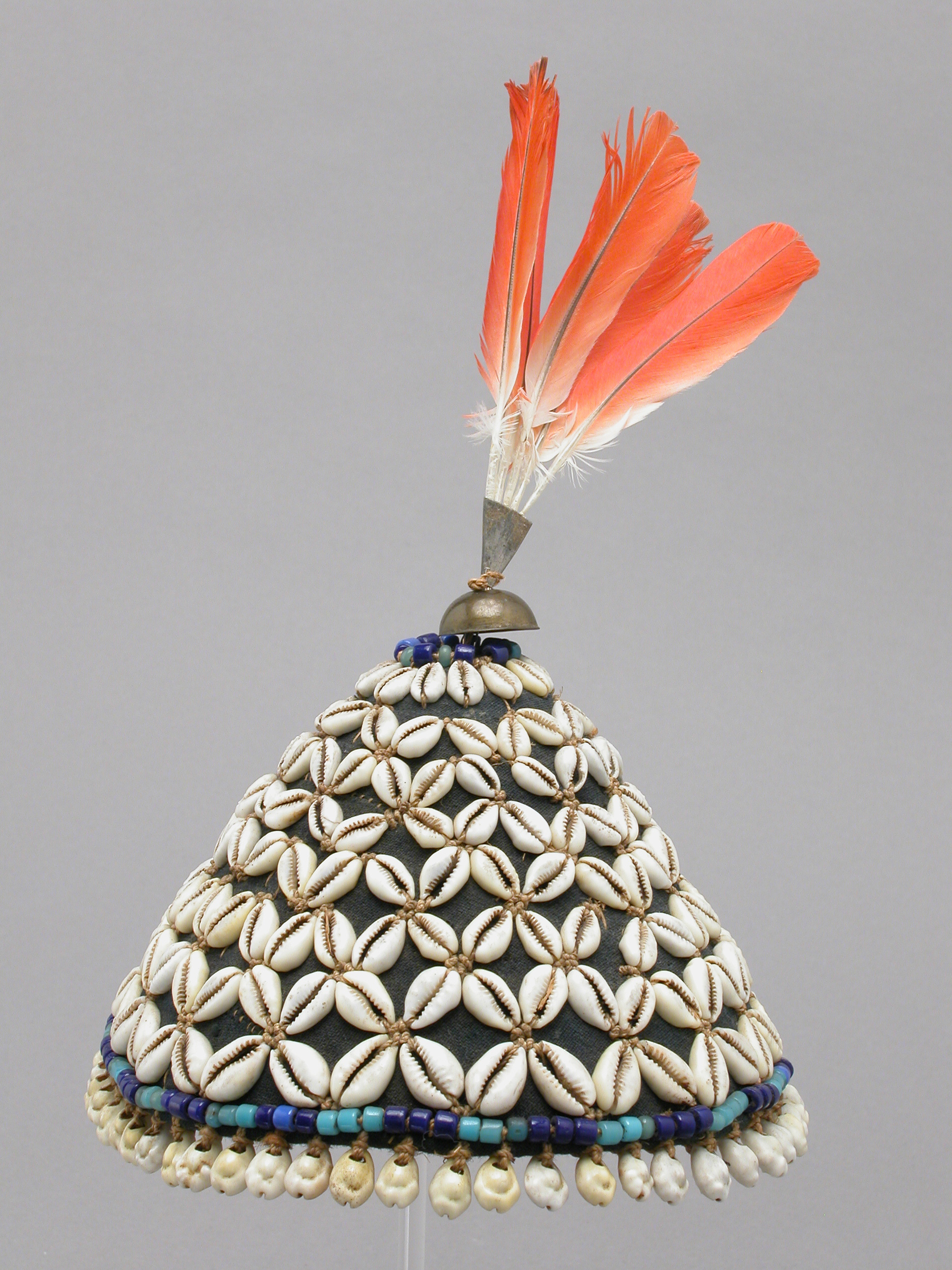Object of the Week: Hat
Winter in Seattle calls for warm hats, often beanies, which are worn for necessity more than anything else. In Kuba culture, hats are important visual indicators of social position and wealth. Composed of woven cloth, cowrie shells, beads, leather, and feathers, this cap is richly ornamented—its form, bright colors, and patterning all speaking to the status of its wearer.
Topped with four coral-colored feathers, this hat is a striking example of Kuba beadwork and appliqué; in addition, its materials carry symbolic significance. Prior to the colonial presence in Africa, cowrie shells and beads were used as currency. Further, white and blue colors are considered positive attributes, associated with purity, prominence, and leadership. The additional shells at the base of the hat move when worn, making a gentle sound meant to attract the attention of passers-by. Together, these details and materials point to the importance of communicating power and prestige within the Kuba community.
The Kuba Kingdom, established in the 17th century, is in what is today the Democratic Republic of the Congo. Known for its artistic production (see here for the wide variety of Kuba works in SAM’s collection), Kuba society is comprised of about 18 distinct subgroups with their own internal political structures and hierarchies. This is where hats such as this one come into play. A marker of status, these hats signal the wearer’s identity. The hats vary in form—the more elaborate the hat, the more powerful the person. Importantly, these caps are worn by men and women alike, received at different stages in life, corresponding with personal growth.
– Elisabeth Smith, Collection & Provenance Associate
